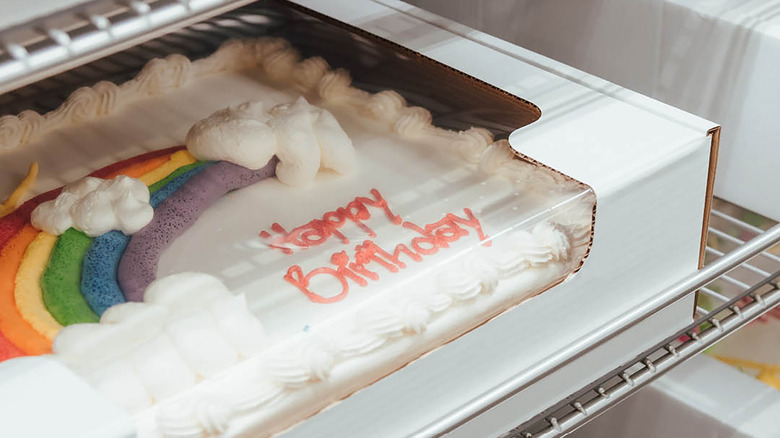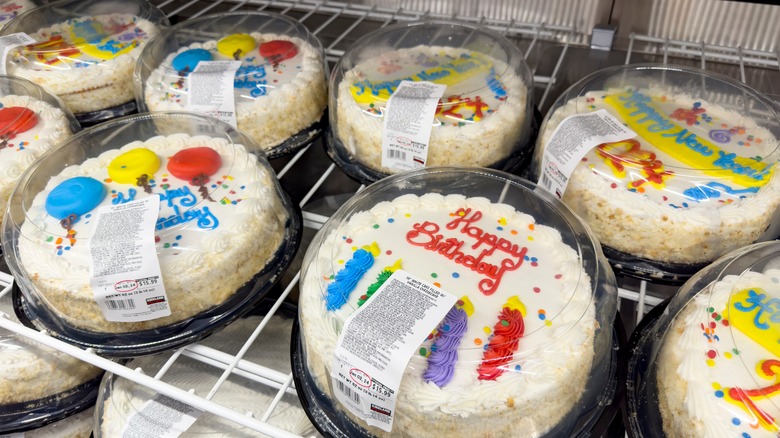Do Costco Cakes Need To Be Refrigerated?
When you're looking for a cake that'll serve a lot of people on a budget, there's one spot that probably comes to mind: Costco, where you can get the iconic sheet cakes in classic flavors like chocolate and vanilla, as well as other delicious seasonal offerings. If you've never tried them out and need a bit of a primer, we suggest you read this before buying a Costco cake. However, once you do decide to buy one, you may wonder where you should store that cake you picked up. Is it okay to leave it on the counter or do you need to empty half your refrigerator to accommodate it?
It depends on the exact type of cake you buy, but typically, the truth about Costco sheet cakes is that they do need to be refrigerated. The classic sheet cakes are iced with buttercream frosting, so you want to refrigerate them to ensure they remain stable. This is particularly important if you're storing and later serving the cake on a hot day, as the fat in your frosting will eventually turn to liquid if it gets hot enough, dripping unappealingly down your cake. Costco makes its buttercream with vegetable shortening, which is solid until about 115 degrees Fahrenheit, so you have a bit more wiggle room than with standard, butter-based buttercream frosting. If you've opted for one of the chain's seasonal offerings, you'll especially want to confirm the type of frosting or topping that's used.
The ruling for Costco's other cakes
Refrigeration is particularly important for cakes that have something other than buttercream frosting, as they may have components that can spoil easier at room temperature. For example, cream cheese shouldn't be left out for more than two hours, so the mini carrot or red velvet cakes with cream cheese frosting definitely need refrigeration. Also, note whether a cake incorporates whipped cream as a decoration or filling, as warm dairy can be a breeding ground for bacteria. When in doubt, check if a cake has milk or eggs listed as ingredients in the frosting or filling — if so, the rule of thumb is to refrigerate it. Ideally, you'll also want to keep it covered when chilling it so the frosting doesn't absorb any odors from other foods in your refrigerator.
Remember to take your cake out to warm up at room temperature for the best texture in both the sponge and the frosting — about 30 minutes prior to serving should do the trick. And, don't be concerned if you spot any condensation on your cake. That's not an issue with how you've chilled it or a bad sign. Sugar simply attracts water, so your frosting might "sweat" slightly if it's a particularly hot or humid day. If you happen to have leftovers, that's just a bonus for future you — provided you know everything you should and shouldn't do when freezing a cake, you can put some away to enjoy later.

